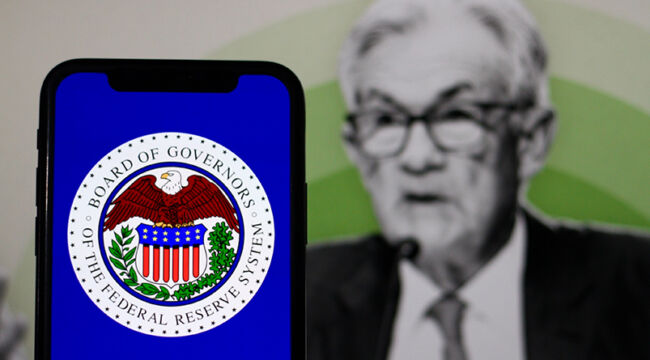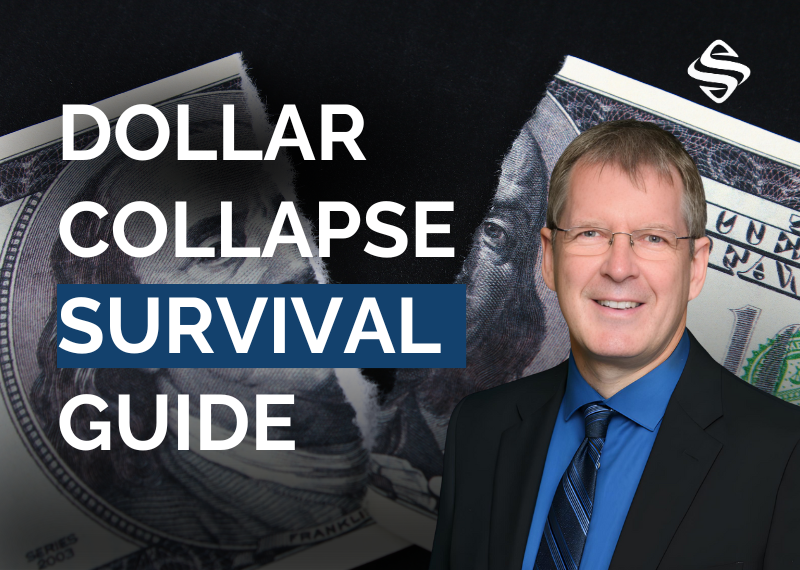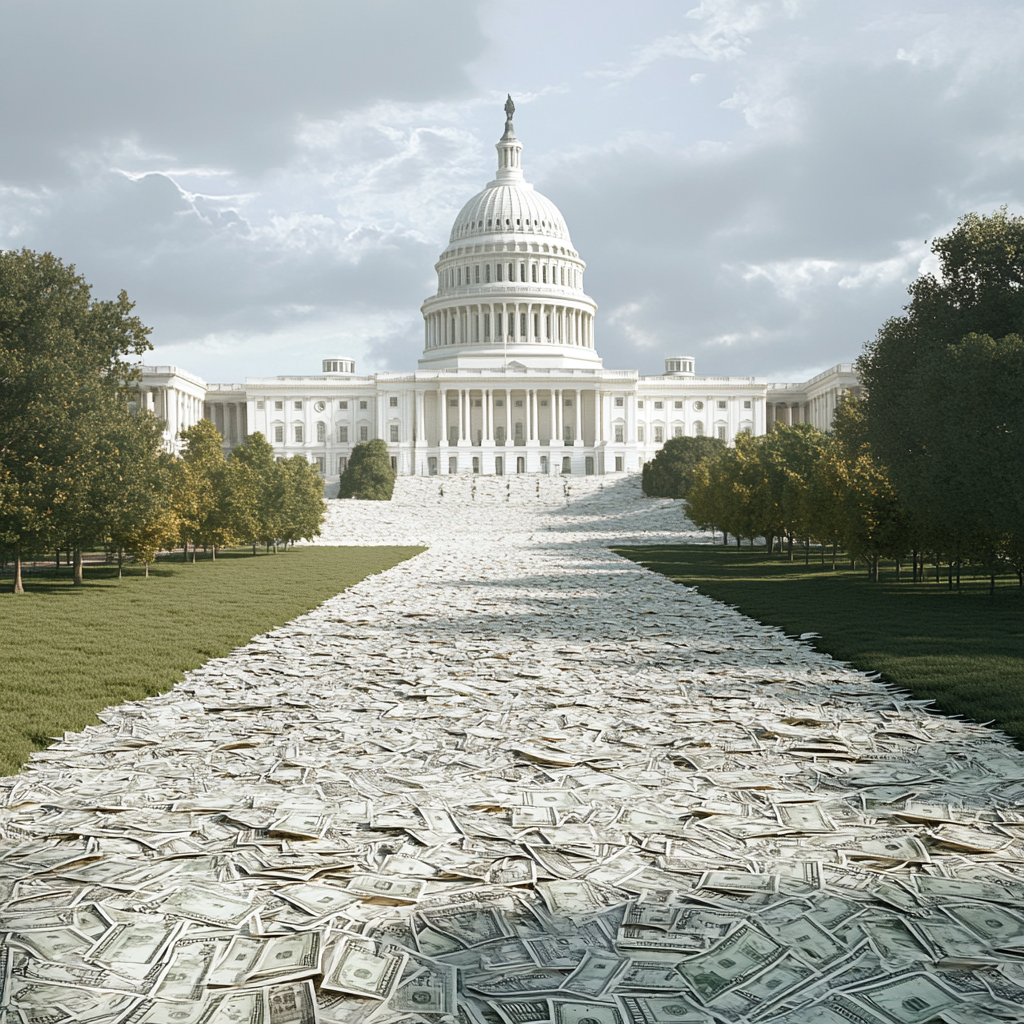It’s Stock Carnage and Rampant Stagflation Everywhere, but the Economy is Booming!
by David Haggith
GoldSeek
 According to Bidenomics, it’s new construction everywhere and robust consumers.
According to Bidenomics, it’s new construction everywhere and robust consumers.
Yet, as the tech sector in US stocks saw shares slammed down around 4%, NVIDIA, which so many stock promoters said could not see a collapse like a dot-com bust, fell almost 10% in just this one day (down 9.5%). No biggie! The economy is great!
Last week, we got a revised GDP report from Uncle Joe’s Fantasy Land that said GDP rose 3% in the second quarter due to surging consumer expenditures, while two of the nation’s large retailers reported hugely declining sales or bankruptcy due to failing consumer expenditures. That adds up.
Surely, Dollar General didn’t collapse entirely in the first two months of the third quarter, so how did it begin the bankruptcy process, giving a reason for declining consumer expenditures if the consumer is so robust and exuberant as to be the big driver of GDP growth in the second quarter?
Powell Announces “Pivot”
by James Rickards
Daily Reckoning
 Labor Day weekend is over, and the election is just over two months away. Is the U.S. economy in a recession as election season enters full swing?
Labor Day weekend is over, and the election is just over two months away. Is the U.S. economy in a recession as election season enters full swing?
There’s a mountain of data suggesting the answer is yes, or if we’re not in a recession, we soon will be. We’ll explore this data below but let’s begin with the (supposedly) most powerful force in the U.S. economy — the Federal Reserve.
On Aug. 23, Fed Chair Jay Powell gave an address to the annual Federal Reserve conference held at Jackson Hole, Wyoming. This was one of Powell’s most important speeches ever for two reasons.
First, he not only pivoted to interest rate cuts (after Wall Street having been wrong about the pivot timing for two years), but more significantly he pivoted from concern about inflation to concern about unemployment.
U.S. Housing Inflation Likely to Fall in Year Ahead, Fed Paper Says
by Reuters
Reuters.com
 Sept 3 (Reuters) – U.S. housing inflation is likely to ease in the coming year as the gap between supply and demand for homes narrows, according to research published on Tuesday by the Federal Reserve Bank of San Francisco.
Sept 3 (Reuters) – U.S. housing inflation is likely to ease in the coming year as the gap between supply and demand for homes narrows, according to research published on Tuesday by the Federal Reserve Bank of San Francisco.
That decline will likely add to downward pressure on inflation, the researchers said in the regional Fed bank’s latest Economic Letter.
Stubbornly high shelter inflation has added considerably to overall U.S. price pressures in recent years even as the Fed raised borrowing costs aggressively to bring down inflation.
That is because while higher borrowing costs reduces demand for housing, it also reduces supply by making it more costly for builders.
Andrew Sleigh On Precious Metals & the Global Reset
by Sprott Money
Sprott Money

Join Paul Preston as he interviews Andrew Sleigh of Sprott Money to explore the growing financial crisis and the role of precious metals in protecting your wealth. In this insightful podcast, they discuss:
- The decline of the U.S. dollar and its impact on purchasing power
- Why gold and silver are essential hedges against inflation and economic instability
- The rising global demand for precious metals, especially from nations like China and Russia
- How central bank digital currencies (CBDCs) could reshape the global economy
- The potential timeline for the global reset and how to prepare before it’s too late
Tune in now to learn how you can safeguard your assets in uncertain times! Listen to the full interview below:
Gen X Due to Retire but Can’t Afford To
from King World News
 Gen X is due to retire but can’t afford to. Take a look…
Gen X is due to retire but can’t afford to. Take a look…
GEN X: DUE TO RETIRE BUT CAN’T AFFORD TO
September 4 (King World News) – Gerald Celente: The oldest of the 65-million-member Generation X—born from 1965 to 1980—will turn 60 next year, putting them within sight of retirement age.
However, many will be unable to stop working.
In 2022, the median household net worth of Gen X’ers ages 45 to 54 was $250,000. That is about 7 percent less than the median for Baby Boomers in 2007, adjusted for inflation, according to data from the U.S. Federal Reserve.
Fed Celebrates End of Inflation Surge, but Many Americans Don’t Feel Like Cheering
by Christopher Rugaber
PBS
 WASHINGTON (AP) — When Jerome Powell delivered a high-profile speech last month, the Federal Reserve chair came the closest he ever had to declaring that the inflation surge that gripped the nation for three painful years was now essentially defeated.
WASHINGTON (AP) — When Jerome Powell delivered a high-profile speech last month, the Federal Reserve chair came the closest he ever had to declaring that the inflation surge that gripped the nation for three painful years was now essentially defeated.
And not only that. The Fed’s high interest rates, Powell said, had managed to achieve that goal without causing a widely predicted recession and high unemployment.
Yet most Americans are not in the same celebratory mood about the plummeting of inflation in the face of the high borrowing rates the Fed engineered. Though consumer sentiment is slowly rising, a majority of Americans in some surveys still complain about elevated prices, given that the costs of such necessities as food, gas and housing remain far above where they were before the pandemic erupted in 2020.
There’s Nothing Magic About 2% Inflation
by William Dunkelberg
Forbes
![]() There’s nothing magic about the Federal Reserve’s 2% inflation goal. It was concocted by a bunch of regulators and economists as a method to keep the economy away from destructive deflation (we could use a little to reduce the 20% price increases over the past three years!), while not causing too much damage to finances. So, the Fed is committed to devaluing the dollar by two cents every year and keeping interest rates 2 percentage points higher; And that’s good? Over 10 years, you have lost 20% of the value of the savings you started with.
There’s nothing magic about the Federal Reserve’s 2% inflation goal. It was concocted by a bunch of regulators and economists as a method to keep the economy away from destructive deflation (we could use a little to reduce the 20% price increases over the past three years!), while not causing too much damage to finances. So, the Fed is committed to devaluing the dollar by two cents every year and keeping interest rates 2 percentage points higher; And that’s good? Over 10 years, you have lost 20% of the value of the savings you started with.
Inflation was under 3% during the Trump administration. It reached 9% under Biden and, over the past three-plus years, the price level (CPI) has increased 20% (cumulative). Compensation rose by less, so real wages fell over that period. To help get the inflation rate back down from its 9% peak, the Fed raised its policy rate to over 5%. With inflation falling to 3%, the Fed is now considering lowering its policy rate. Market rates will follow (including mortgage rates and the 10-year Treasury yield), hopefully settling in to a “soft landing” (a slowdown in the economy short of a recession).
Is it Even Possible to Fix the National Debt? Yes, but at Great Cost.
by James Hickman
Schiff Sovereign
 I wanted to do a bit of a deeper dive today on the topic of the national debt— and answer a basic question: is the debt a terminal problem? Or is it still fixable?
I wanted to do a bit of a deeper dive today on the topic of the national debt— and answer a basic question: is the debt a terminal problem? Or is it still fixable?
I actually had a bit of a debate on the topic with my friend and partner Peter Schiff last week. Peter thinks it’s terminal… and that there’s no way it could be paid down.
Based on the math, I disagree. There are a lot of things that have to go right, and very little that can go wrong. But at the moment, it is still possible to improve America’s gargantuan national debt challenge.
The first and most important thing to understand when discussing national debt is that the really important number to consider is the Debt-to-GDP ratio… not the actual debt itself.
Gold Breakouts: Historic Global Rotation, Gold, Tech, and Inflation
from King World News
 A historic global capital rotation is about to be unleashed and gold is at the center of that shift. This will also ignite the silver market. Take a look…
A historic global capital rotation is about to be unleashed and gold is at the center of that shift. This will also ignite the silver market. Take a look…
Gold vs S&P 500
September 3 (King World News) – Graddhy out of Sweden: While we are waiting for a clear breakout on the posted larger time frame, we can enjoy that gold already does have a breakout vs SPX, on a monthly line chart. This means a historical sector rotation has started with changing global capital flows. Fantastic chart really.
U.S. Presidents On Sound Money: A Historical Perspective
by Joshua Glawson
GoldSeek
 Throughout U.S. history, the concept of sound money has played a crucial role in shaping the nation’s financial stability. Sound money, typically tied to precious metals like gold and silver, serves as a safeguard against inflation and government overreach in monetary policy.
Throughout U.S. history, the concept of sound money has played a crucial role in shaping the nation’s financial stability. Sound money, typically tied to precious metals like gold and silver, serves as a safeguard against inflation and government overreach in monetary policy.
The perspectives of U.S. Presidents on sound money have varied widely, reflecting their times and economic philosophies.
This article explores the stances of various U.S. Presidents on sound money, offering insights into how their policies impacted the nation’s financial health.
